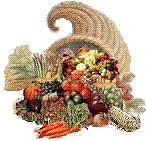
Sharp Things
Ordinary knives are sort of meat-slicer variants; too narrow and light weight for good vegetable work, too wide for really good boning or slicing, and too dull for bread or butter.
I bought my first four knives- carbon-steel Sabatiers- when I was a college freshman, and I am still using them. 12", 10" and 6" French chef knives and a 3" paring knife. The carbon steel meat slicer a friend liberated from a summer camp kitchen that year is also still with me, and I have added a 10" stainless steel french chef's knife, a 10" serrated bread knife, a stainless steel tomato knife, and a stainless steel paring knife. Poultry shears, two kinds of vegetable peelers and a variety of flat graters complete my sharp collection.
Good knives cost about $1 per inch then; now traditional knives at least $6-8 per inch. Given the 30+ year life span, that's still a bargain! You need to actually handle the knives; depending on your handsize and the way you use your knives, you will want a different balance, size and shape of handle.
***** Five star choice: a real best buy at under $2 per inch, the Dexter/Russell brand Sanisafe knives sold at restuarant supply stores have superb quality steel and very easy to clean handles. They can sometimes be found online at clearance prices, but try one first at your local restuarant supply store to make sure it is comfortable for you.
Preserve knife edges with wooden or acrylic cutting boards. Stainless steel blades are hard to sharpen, but they do not discolor vegetables. They also forgive being left damp or dirty, important if you are working with less experienced cooks.
I have a sharpening steel and fine and coarse carborundum sharpening stones, one an inheritance from my granddad, who taught me the importance of sharpening knives. To save both blades and handles, none of the knives go into the dishwasher. From time to time, I dip a cork in some Ajax or Comet cleanser and buff up the carbon steel blades.
| Type of knife | Blade material | Size of blade | Uses |
| French chef | Carbon steel | 6-12" | Basic slicing and dicing, meats and veggies |
| French chef | Stainless steel | 6-12" | Potatoes, acid fruits |
| Paring knives | Stainless or carbon steel | 2-6" | Peeling and trimming |
| Boning (very thin, pointed) | Carbon steel | 6-8" | Boning and trimming meat |
| Slicing (about 3/4 to 1" thick) | Carbon or stainless steel | 8-12" | Slicing loaves and roasts |
| Serrated | Stainless steel | 6-10" | Slicing thin |
